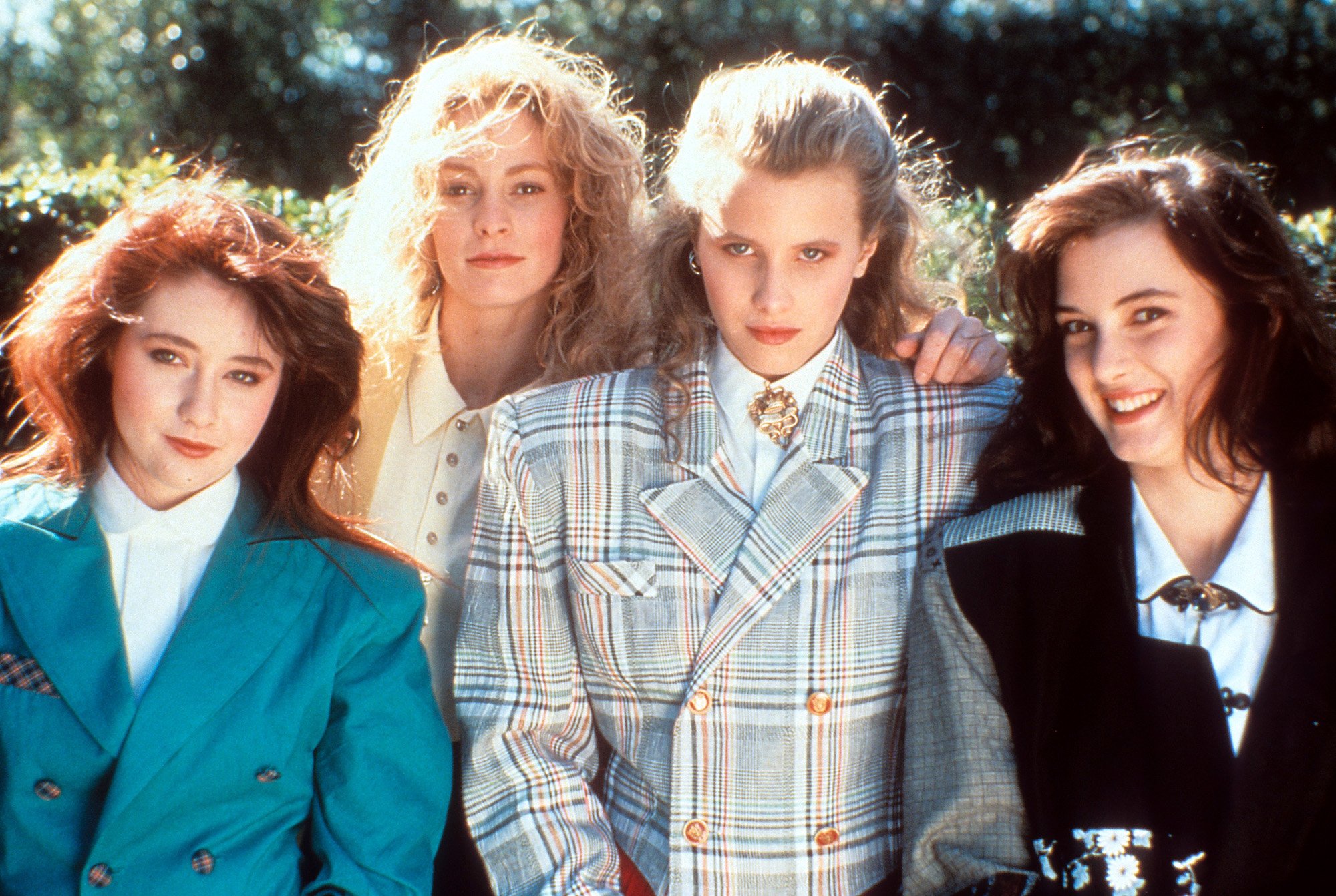‘Heathers’: 1988 Film Had Several Alternate Endings
When Heathers was released in 1989, little did anyone involved know that it would become an instant classic for not only its generation but several generations after. The dark comedy shows teenage angst through the lens of both a high school comedy and a horror movie. With an insane premise and willingness to go dark places, however, the script required several makeovers from the beginning stages to the time it hit the screen.

Heathers’ legacy
Coming at the end of the John Hughes era of teenage comedies, Heathers shows the cliquiness of high school. At its onset, it feels right in line with Hughes’ movies. It is about a teenage outcast who falls victim to the popular clique of Heathers as they tarnish her reputation and start spreading false rumors about her. That teenager, Winona Ryder’s Veronica, eventually falls for a bad boy named JD, and the film takes a dark turn.
A perfect encapsulation of eighties cinema and pop culture, Heathers is a comedy, horror, and social satire that never entirely falls into any of those categories. It was a moderate success upon release but quickly became a cult classic that helped make Ryder, Christian Slater, and Shannen Doherty unabashed stars. To this day, the film resonates with new audiences. An anthology series based on the series premiered in 2018, and the CW’s Riverdale paid tribute to the musical.
It has spawned years of speculation about a sequel, a Broadway play, and numerous copycat movies. It’s a film that’s very much of its time, for better or for worse. Coming in the years before school shootings became the norm, the film spotlights the darker side of high school and how monsters can be created through their environment.
Teenage angstland
Throughout the movie, Slater plays an outcast named JD. JD is equal parts cool and mysterious. When Ryder’s Veronica Sawyer falls in love with him, there’re no signs that it will take a darker turn, but when JD starts to kill those who have wronged her, the story takes a demented twist.
Slater plays JD as an otherworldly psychopath who seems unreal in nature. However, with every kill, he grows a little more demented, and Veronica grows weary about the plot that she’s found herself in. She stages a suicide to fool JD then plots her revenge on him the next day at school. JD plans on bombing the school, but when Veronica gets in the way, he ends up killing only himself.
It is a dark, memorable look at the teen dilemma through the lens of satire and hyperbole. That ending, however, did not come to writer Daniel Waters right away.
Alternate endings
The film is, unabashedly, a dark comedy. While everything plays for laughs, the idea of a teenager being behind multiple students’ deaths and still coming out on top is hard to swallow, but the film does a good job owning its ridiculous concept. The ending, while extreme, however, was initially even darker.
According to Variety, Waters revealed there were three different endings before he settled on one that fits. The first one had JD achieve the ultimate goal of his scheme — to blow up the school. The second, darker ending had Veronica seize the explosives from her boyfriend to be blown up herself. However, the third had Veronica survive the whole ordeal only to get stabbed by her friend, Martha, who calls her Heather.
For whatever reason, Waters settled on the iconic one we saw, and audiences agreed with his choice. While Heathers is a relic of the post-Reagan era of America, it still resonates with audiences today. For such an audacious project to see the light of day, however, it needed to get put through the wringer. Waters did just that, and the version that he settled on remains an audience-pleaser to this day.


